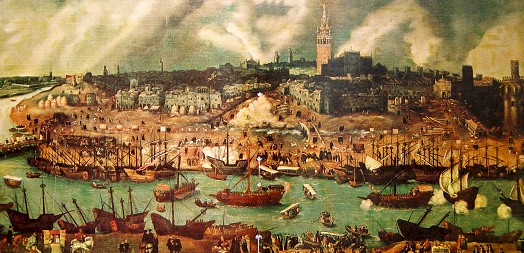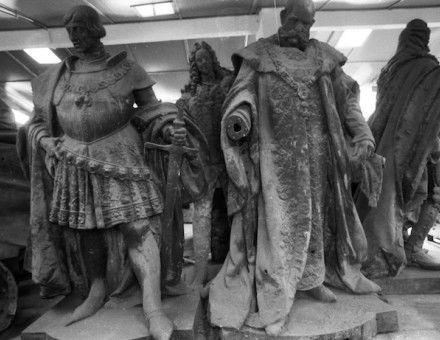The Casa de Contratacion Established in Seville
The House of Trade was set up in Seville on January 20th, 1503, granting the city the exclusive right to trade with the New World.

The discovery of America should have given the Spanish economy a giant boost, but in 1503, three years before the death of Christopher Columbus, the city of Seville in Castile was awarded the exclusive right to trade with the New World. The House of Trade was set up there to control all vessels, goods and passengers, including missionaries, between Spain and ‘the Indies’. The American colonies were treated as the crown’s private property and the Casa was meant to steer the maximum amount of money into the royal treasury. All ships bound for America had to leave from Seville, land at specified ports on the other side and return to Seville. The explorer Amerigo Vespucci, who had been running a Florentine business house in Seville, was appointed chief navigator to the Casa in 1508. He was responsible for licensing ship’s captains and producing maps of routes and overseas territories. A fleet was built up to shepherd merchant ships to and fro across the Atlantic and protect them from pirates, and the Casa ran its own navy yard.
The fact that Seville was fifty miles inland from the Atlantic and further still from the huge harbour of Cadiz on the south-west coast was less of a difficulty than it might seem. The ships of the time were small enough to move up and down the Guadalquivir easily and Cadiz became part of the monopoly. Exports to America in the early days included olives, wheat, ceramics and leather goods. Coming the other way was gold bullion, later followed by quantities of silver as the fabulous mines of Bolivia and Mexico opened up in the 1540s. The annual value of precious metals reaching Seville rose from around 1 million pesos in 1530 to over 35 million by 1595.
As money poured into Seville, so did people, and by 1600 the city was the largest and richest in Spain and one of the wealthiest in Europe. The monopoly was never as exclusively Castilian as it appeared. Seville had a flourishing colony of Genoese merchants and financiers, who took a leading part in the traffic. In the 1520s and ’30s the Emperor Charles V allowed his German bankers to provide capital for the American trade and there were Dutch, English and other merchants involved in transatlantic commerce from Seville as well as businessmen abroad who traded through agents in Seville.
The idea that such a web of human activity could be controlled by a bureaucracy proved hopelessly unrealistic and for all the cascade of silver, Spain remained a poor country. The reasons are debated, but as the colonies across the Atlantic grew, Spanish industry could not supply the products they demanded. Goods were imported from other European countries, while the wealthy merchants who ran the monopoly from Seville and Cadiz colluded with their opposite numbers in the Americas to keep supplies down and prices up. The result was smuggling on a massive scale, which undermined a system that had also to contend with the determined efforts of the English, Dutch and French to cut themselves shares of the Spanish pie. The Casa and its monopoly did, however, turn Seville into one of the most beautiful cities in Europe.




